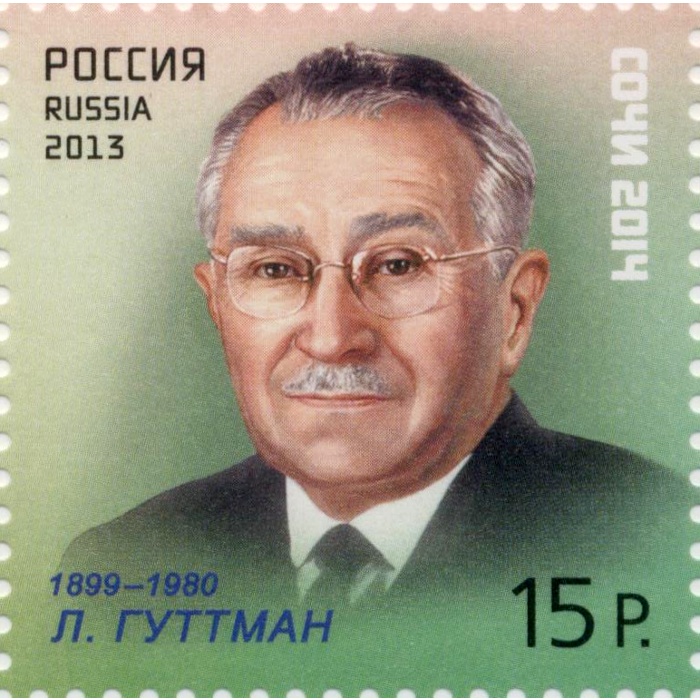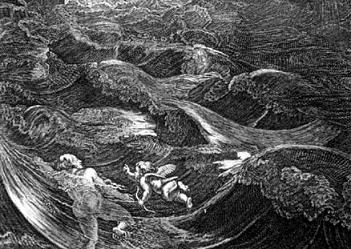|
Louise Watkin
Louise Stephanie Watkin (née Niklasson; born 13 August 1992 in Stockholm, Sweden) is a British Paralympic swimmer. Watkin swims in the S9 category and represented Great Britain in the 2012 Summer Paralympics, in which she won two silver and two bronze medals. She won one silver and three bronze medals at the 2008 Paralympics in Beijing. Career history She came to the UK in 1996. She was born with Upper Limb Deficiency, and is missing her left hand. After trying out several sports and activities as a child, she settled on swimming at the age of 12. Her first major competition was the World Championships in Durban, South Africa in 2006, and since then she has competed in the Beijing Paralympic Games in 2008, the European Championships in Reykjavik in 2009, and also the World Short Course Championships in Rio (also in 2009). At the Beijing Paralympics, despite being only just 16, she won 1 silver and 3 bronze medals. As of August 2012, Watkin is ranked no 1 in the world in 50m ... [...More Info...] [...Related Items...] OR: [Wikipedia] [Google] [Baidu] |
Stockholm
Stockholm (; ) is the Capital city, capital and List of urban areas in Sweden by population, most populous city of Sweden, as well as the List of urban areas in the Nordic countries, largest urban area in the Nordic countries. Approximately 1 million people live in the Stockholm Municipality, municipality, with 1.6 million in the Stockholm urban area, urban area, and 2.5 million in the Metropolitan Stockholm, metropolitan area. The city stretches across fourteen islands where Mälaren, Lake Mälaren flows into the Baltic Sea. Outside the city to the east, and along the coast, is the island chain of the Stockholm archipelago. The area has been settled since the Stone Age, in the 6th millennium BC, and was founded as a city in 1252 by Swedish statesman Birger Jarl. The city serves as the county seat of Stockholm County. Stockholm is the cultural, media, political, and economic centre of Sweden. The Stockholm region alone accounts for over a third of the country's Gros ... [...More Info...] [...Related Items...] OR: [Wikipedia] [Google] [Baidu] |
2009 IPC Swimming European Championships – Women's 200 Metre Individual Medley
The women's 200 metre individual medley at the 2009 IPC Swimming European Championships was held at Laugardalslaug in Reykjavik from 18 to 24 October. Medalists See also *List of IPC world records in swimming The world records in disability swimming are ratified by the International Paralympic Committee (IPC). These are the fastest performances in swimming events at meets sanctioned by the IPC. Races are held in four swimming strokes: freestyle swimmin ... References {{DEFAULTSORT:2009 IPC Swimming European Championships - Women's 200 metre individual medley individual medley 200 m women 2009 in women's swimming ... [...More Info...] [...Related Items...] OR: [Wikipedia] [Google] [Baidu] |
Paralympic Bronze Medalists For Great Britain
The Paralympic Games or Paralympics is a periodic series of international multisport events involving athletes with a range of disabilities. There are Winter and Summer Paralympic Games, which since the 1988 Summer Olympics in Seoul, South Korea, have been held shortly after the corresponding Olympic Games. All Paralympic Games are governed by the International Paralympic Committee (IPC). The Paralympics began as a small gathering of British World War II veterans in 1948. The 1960 Games in Rome drew 400 athletes with disabilities from 23 countries, as proposed by doctor Antonio Maglio. Currently it is one of the largest international sporting events: the 2020 Summer Paralympics featuring 4,520 athletes from 163 National Paralympic Committees. Paralympians strive for equal treatment with non-disabled Olympic athletes, but there is a large funding gap between Olympic and Paralympic athletes. The Paralympic Games are organized in parallel with and in a similar way to the Olympic ... [...More Info...] [...Related Items...] OR: [Wikipedia] [Google] [Baidu] |
Swimmers At The 2012 Summer Paralympics
Swimming is an individual or team racing sport that requires the use of one's entire body to move through water. The sport takes place in pools or open water (e.g., in a sea or lake). Competitive swimming is one of the most popular Olympic sports, with varied distance events in butterfly, backstroke, breaststroke, freestyle, and individual medley. In addition to these individual events, four swimmers can take part in either a freestyle or medley relay. A medley relay consists of four swimmers who will each swim a different stroke, ordered as backstroke, breaststroke, butterfly and freestyle. Swimming each stroke requires a set of specific techniques; in competition, there are distinct regulations concerning the acceptable form for each individual stroke. There are also regulations on what types of swimsuits, caps, jewelry and injury tape that are allowed at competitions. There are many health benefits to swimming, but it is possible for competitive swimmers to incur injur ... [...More Info...] [...Related Items...] OR: [Wikipedia] [Google] [Baidu] |
Congenital Amputees
A birth defect is an abnormal condition that is present at birth, regardless of its cause. Birth defects may result in disabilities that may be physical, intellectual, or developmental. The disabilities can range from mild to severe. Birth defects are divided into two main types: structural disorders in which problems are seen with the shape of a body part and functional disorders in which problems exist with how a body part works. Functional disorders include metabolic and degenerative disorders. Some birth defects include both structural and functional disorders. Birth defects may result from genetic or chromosomal disorders, exposure to certain medications or chemicals, or certain infections during pregnancy. Risk factors include folate deficiency, drinking alcohol or smoking during pregnancy, poorly controlled diabetes, and a mother over the age of 35 years old. Many birth defects are believed to involve multiple factors. Birth defects may be visible at birth or diagno ... [...More Info...] [...Related Items...] OR: [Wikipedia] [Google] [Baidu] |
Living People
Purpose: Because living persons may suffer personal harm from inappropriate information, we should watch their articles carefully. By adding an article to this category, it marks them with a notice about sources whenever someone tries to edit them, to remind them of WP:BLP (biographies of living persons) policy that these articles must maintain a neutral point of view, maintain factual accuracy, and be properly sourced. Recent changes to these articles are listed on Special:RecentChangesLinked/Living people. Organization: This category should not be sub-categorized. Entries are generally sorted by family name In many societies, a surname, family name, or last name is the mostly hereditary portion of one's personal name that indicates one's family. It is typically combined with a given name to form the full name of a person, although several give .... Maintenance: Individuals of advanced age (over 90), for whom there has been no new documentation in the last ten ... [...More Info...] [...Related Items...] OR: [Wikipedia] [Google] [Baidu] |
1992 Births
Year 199 ( CXCIX) was a common year starting on Monday of the Julian calendar. At the time, it was sometimes known as year 952 '' Ab urbe condita''. The denomination 199 for this year has been used since the early medieval period, when the Anno Domini calendar era became the prevalent method in Europe for naming years. Events By place Roman Empire * Mesopotamia is partitioned into two Roman province The Roman provinces (, pl. ) were the administrative regions of Ancient Rome outside Roman Italy that were controlled by the Romans under the Roman Republic and later the Roman Empire. Each province was ruled by a Roman appointed as Roman g ...s divided by the Euphrates, Mesopotamia and Osroene. * Emperor Septimius Severus lays siege to the city-state Hatra in Central-Mesopotamia, but fails to capture the city despite breaching the walls. * Two new legions, I Parthica and III Parthica, are formed as a permanent garrison. China * Battle of Yijing: Chine ... [...More Info...] [...Related Items...] OR: [Wikipedia] [Google] [Baidu] |
Natalie Du Toit
Natalie du Toit OIG MBE (; born 29 January 1984) is a South African swimmer. She is best known for the gold medals she won at the 2004 Paralympic Games as well as the Commonwealth Games. She was one of two Paralympians to compete at the 2008 Summer Olympics in Beijing; the other being table tennis player Natalia Partyka. Du Toit became the third amputee ever to qualify for the Olympics, where she placed 16th in the 10 km swim. Early life Du Toit was born in Cape Town, South Africa and attended Timour Hall Primary school. She began competing internationally in swimming at the age of 14. In February 2001, her left leg was amputated at the knee after she was hit by a car while riding her scooter back to school after swimming practice. She was 17 at the time. Three months later, before she had started walking again, she was back in the pool with the intention of competing in the 2002 Commonwealth Games. Du Toit swims without the aid of a prosthetic limb. She completed her s ... [...More Info...] [...Related Items...] OR: [Wikipedia] [Google] [Baidu] |
Paralympic
The Paralympic Games or Paralympics is a periodic series of international multisport events involving athletes with a range of disabilities. There are Winter and Summer Paralympic Games, which since the 1988 Summer Olympics in Seoul, South Korea, have been held shortly after the corresponding Olympic Games. All Paralympic Games are governed by the International Paralympic Committee (IPC). The Paralympics began as a small gathering of British World War II veterans in 1948. The 1960 Games in Rome drew 400 athletes with disabilities from 23 countries, as proposed by doctor Antonio Maglio. Currently it is one of the largest international sporting events: the 2020 Summer Paralympics featuring 4,520 athletes from 163 National Paralympic Committees. Paralympians strive for equal treatment with non-disabled Olympic athletes, but there is a large funding gap between Olympic and Paralympic athletes. The Paralympic Games are organized in parallel with and in a similar way to the Olymp ... [...More Info...] [...Related Items...] OR: [Wikipedia] [Google] [Baidu] |
2009 IPC Swimming European Championships – Women's 400 Metre Freestyle
The women's 400 metre freestyle at the 2009 IPC Swimming European Championships was held at Laugardalslaug in Reykjavik from 18–24 October. Medalists See also *List of IPC world records in swimming The world records in disability swimming are ratified by the International Paralympic Committee (IPC). These are the fastest performances in swimming events at meets sanctioned by the IPC. Races are held in four swimming strokes: freestyle swimmin ... References {{DEFAULTSORT:2009 IPC Swimming European Championships - Women's 400 metre freestyle freestyle 400 m women 2009 in women's swimming ... [...More Info...] [...Related Items...] OR: [Wikipedia] [Google] [Baidu] |
2009 IPC Swimming European Championships – Women's 100 Metre Breaststroke
9 (nine) is the natural number following and preceding . Evolution of the Hindu–Arabic digit Circa 300 BC, as part of the Brahmi numerals, various Indians wrote a digit 9 similar in shape to the modern closing question mark without the bottom dot. The Kshatrapa, Andhra and Gupta started curving the bottom vertical line coming up with a -look-alike. How the numbers got to their Gupta form is open to considerable debate. The Nagari continued the bottom stroke to make a circle and enclose the 3-look-alike, in much the same way that the sign @ encircles a lowercase ''a''. As time went on, the enclosing circle became bigger and its line continued beyond the circle downwards, as the 3-look-alike became smaller. Soon, all that was left of the 3-look-alike was a squiggle. The Arabs simply connected that squiggle to the downward stroke at the middle and subsequent European change was purely cosmetic. While the shape of the glyph for the digit 9 has an ascender in most modern typefa ... [...More Info...] [...Related Items...] OR: [Wikipedia] [Google] [Baidu] |



